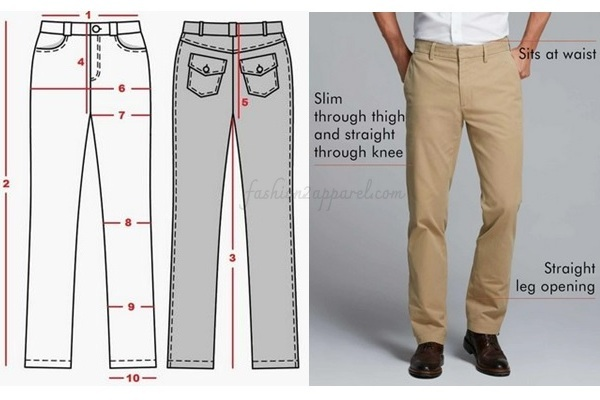Introduction: how to measure pants
how to measure pants that fit perfectly can feel like an endless quest. Whether you’re shopping online, at a store, or altering your own clothes, accurate measurements are crucial. Properly measured pants ensure not only comfort but also confidence in your how to measure pants appearance. Ill-fitting pants can lead to issues like bunching, gapping, or excessive tightness, which can ruin the overall look.
Taking accurate measurements also helps you save time and money. Instead of frequent returns or costly tailoring adjustments, you can shop smarter and focus on pieces that truly work for your body type. Let’s dive into the step-by-step process of how to measure pants like a pro.
Tools You Need for how to measure pants

Essential Measuring Tools
To measure pants accurately, a soft measuring tape is indispensable. Fabric tapes are more flexible and better suited for clothing than retractable ones. how to measure pants Ensure you also have a flat surface, such as a sturdy table or the floor, to lay the pants flat. Keep a notebook or a measurement app handy to record each number as you go.
Optional Tools for Better Accuracy
For added precision, consider using a mannequin or pants hanger to hold the garment in place. Templates or measurement guides, often available how to measure pants online, can help verify tricky measurements, ensuring consistent results every time.
Preparing Pants for how to measure pants

Choose the Right Pair
Select a pair of pants that matches the style you’re aiming for, as measurements can vary significantly between casual jeans and formal trousers. Washing how to measure pants and ironing the pants beforehand removes any shrinkage or creases that may distort the numbers.
Lay Your Pants Flat
Place the pants on a clean, flat surface. how to measure pants Smooth out wrinkles and align the seams to ensure accurate measurements. An uneven lay can lead to misleading results, so take your time to perfect this step.
Understanding the Key Parts of Pants to Measure
Waistband
The waistband measurement determines how snugly the pants will fit around your waist. Flatten the waistband and measure from one end to the other, how to measure pants then double this number for the total circumference.
Rise
The rise is measured from the crotch seam to the top of the waistband. It dictates where the pants will sit on your body—whether they are high-rise, mid-rise, how to measure pants or low-rise. Knowing your rise preference is key for comfort and style.
Inseam
The inseam runs from the crotch to the hem of the pants. This measurement affects how long the pants will be and whether they’ll drape properly over your shoes.
Outseam
Unlike the inseam, the outseam measures from the top of how to measure pants the waistband to the hem. It’s a helpful metric when customizing or altering pants.
Hips, Thighs, and Knees
The widest part of the hips should be measured for a proper fit. Similarly, the thigh and knee widths are essential for tailored or tapered styles. Measure these areas how to measure pants flat, and double the numbers for total circumferences.
Leg Opening (Hem)
The leg opening, or hem, affects how the pants look with your how to measure pants footwear. Use the same flat measurement method for accuracy.
Detailed Step-by-Step Guide to Measuring Pants
Measuring for Casual Pants or Jeans
Lay the jeans flat and focus on areas prone to shrinkage, how to measure pants like the waist and inseam. Pay attention to the stretch factor if the jeans contain elastane or spandex.
Measuring for Formal or Dress Pants
For dress pants, prioritize waist, outseam, and rise. These how to measure pants details ensure a sharp, tailored fit, critical for formal events or office wear.
Adjusting for Special Fits
When measuring for slim-fit or boot-cut pants, consider additional measurements like thigh and knee widths. These styles often require precision to ensure they fit how to measure pants comfortably without appearing too tight.
Measuring Pants Without Physical Access
Using a Similar Pair You Own
If you’re shopping online, measure a pair of pants that already fits you well. Focus on the waist, rise, and inseam, as these are the most critical measurements for sizing how to measure pants accuracy.
Checking Manufacturer Size Charts
Manufacturer size charts can guide your selection, but remember they vary widely between brands. Use your measurements to cross-check the chart rather than relying on how to measure pants standard sizes.
Tips for Measuring Pants for Different Body Types
Tailoring for Curvy Shapes
For curvier figures, focus on the waist-to-hip ratio to avoid gapping or tightness. Ensure rise and hip measurements align with your natural curves how to measure pants for maximum comfort.
Fitting for Petite Individuals
Petite frames often require shorter inseams and smaller waist sizes. Measure carefully to find styles that enhance proportion, like mid-rise or slim-leg options.
Accommodating Plus Sizes
Pay extra attention to hip and thigh widths to ensure freedom of movement. Comfort-focused designs like elasticized waists may need different measuring how to measure pants techniques.
Conclusion: Master the Art of Measuring Pants
how to measure pants can transform your shopping experience, helping you avoid ill-fitting purchases and costly returns. By following this comprehensive guide, you’ll save time, money, and frustration while ensuring a wardrobe that fits like a dream. Practice these techniques, and you’ll master the art of measuring pants in no time.
FAQs how to measure pants
1. What’s the difference between inseam and outseam?
The inseam measures the inner length from crotch to hem, while the outseam measures the outer length from waistband to hem.
2. Can I measure pants without a measuring tape?
Yes, use a string to mark the length and compare it to a ruler or standard scale.
3. How do I account for fabric shrinkage?
Always wash and iron pants before measuring, especially if they’re made of cotton or denim.
4. What’s the easiest way to measure pants for hemming?
Measure the desired length from the crotch (inseam) or waistband (outseam) to the hem and mark the alteration point.
5. How often should I recheck my measurements?
Recheck your measurements every 6–12 months, as body size and preferences may change.



